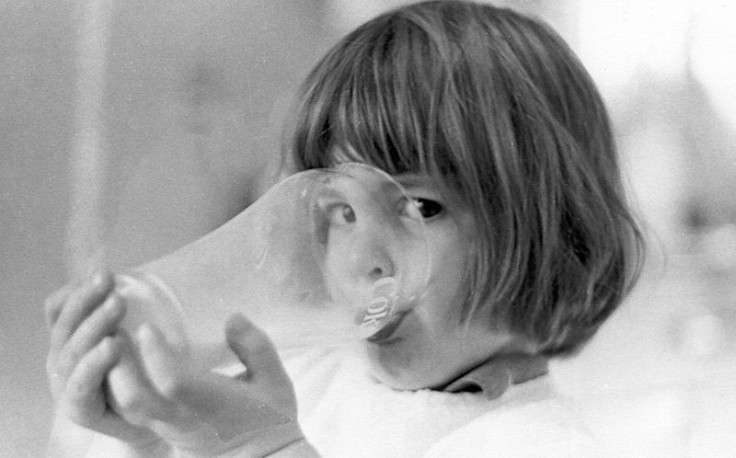Vitamin D Deficiency Linked To High Risk Of Anemia In Kids: Which Race Is Found To Be Most Anemic?

Children who drink milk and play outside in the sunshine are mistakenly thought to be getting the recommended daily amount of vitamin D. Surprisingly, most infants, adolescents, and adults are diagnosed with a vitamin D deficiency due to lifestyle changes and increased sunscreen usage. Children who exhibit low levels of vitamin D have been found to face a high risk of anemia, according to a recent study.
The American Academy of Pediatricians (AAP) recommends babies to have 400 international units (IU) of vitamin D per day during the first year of life, beginning in the first few days, and 600 IU for anyone over the age of 1. Vitamin D helps to ensure the body absorbs and preserves calcium and phosphorus — both essential for bone development, which maintains a normal immune system. Children who receive a sufficient amount of the “sunshine” vitamin will experience normal growth and development of bones and teeth, along with an increased resistance to certain diseases. Anemia — a common blood disorder that lowers the level of healthy red blood cells (RBCs) — has been thought to be associated with a vitamin D deficiency.
Researchers from John Hopkins University sought to examine the link between vitamin D deficiency and anemia by studying blood samples from more than 10,400 children to effectively track levels of vitamin D and hemoglobin.
In the study, a mild vitamin D deficiency was defined as vitamin D levels that are below 30 nanograms per milliliter (ng/ml). A severe vitamin D deficiency was considered to be at or below 20 ng/ml. Children who are diagnosed with either a mild or severe deficiency require treatment with supplements.
Children who are not of breast-feeding age are recommended to take a chewable multivitamin supplement that contains 400 IU of vitamin D, according to the AAP. Chewable vitamins are considered to be safe for children over the age of 3 who are able to chew hard foods and candy.
Breast- or bottle-fed babies are recommended to take liquid supplements. “There are liquid preparations that give the recommended intake of 400 IU in 1/2 or 1 mL, which are considered to be safer by some,” said Carol Wagner, M.D., professor of pediatrics at the Medical University of South Carolina, to healthychildren.org.
Adolescents with low vitamin levels were found to have low hemoglobin levels compared to their non-anemic counterparts in the study, reports Science Daily. Those with a mild vitamin D deficiency had the sharpest spike in anemia risk while those with severe levels were nearly twice at risk of anemia than those with normal vitamin D levels.
To further probe the strong correlation found between low levels of vitamin D and anemia, the researchers decided to look at race and unveiled an interesting finding. The study authors found that black children had higher rates of anemia compared to white children — 14 percent and two percent, respectively. They were also more likely to have lower vitamin D levels. However, their anemia risk didn’t rise until their vitamin D levels significantly dropped lower than those of white children. This finding could lend to a reevaluation of prevention and treatments that pediatricians use for these conditions.
"The clear racial variance we saw in our study should serve as a reminder that what we may consider a pathologically low level in some may be perfectly adequate in others, which raises some interesting questions about our current one-size-fits-all approach to treatment and supplementation," said Meredith Atkinson, M.D., M.H.S., a pediatric kidney specialist at the Johns Hopkins Children's Center and lead investigator of the study.
Typically, African American children are more susceptible to sickle cell anemia — the lack of sufficient healthy red blood cells to carry enough oxygen throughout the body — if both parents carry a sickle cell gene. This gene is more common in families that come from Africa, among other countries, according to the Mayo Clinic. In the U.S., approximately one out of every 500 African American children is born with this form of anemia.
The researchers confirmed that the findings of the study do not prove a cause-and-effect relationship between the two conditions, but do provide evidence of an association between vitamin D deficiency and hemoglobin.
"If our findings are confirmed through further research, low vitamin D levels may turn out to be a readily modifiable risk factor for anemia that we can easily tackle with supplements," said Jeffrey Fadrowski, M.D., M.H.S., a pediatric kidney specialist at Johns Hopkins and senior study investigator.
Source: Atkinson MA, Melamed ML, Kumar J, et al. Vitamin D, Race, and Risk for Anemia in Children. The Journal of Pediatrics. 2013.
Published by Medicaldaily.com



























